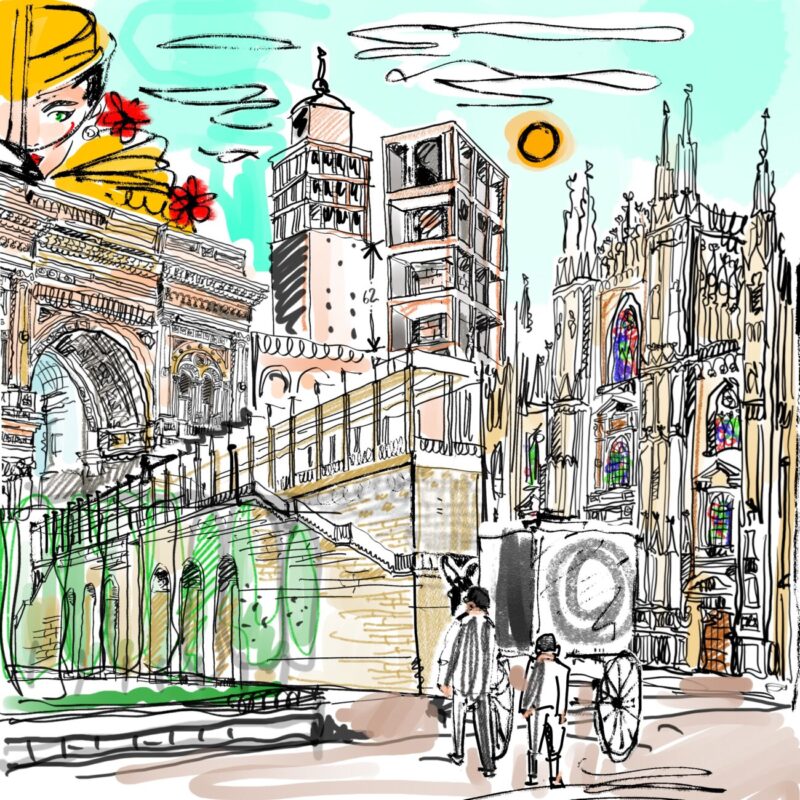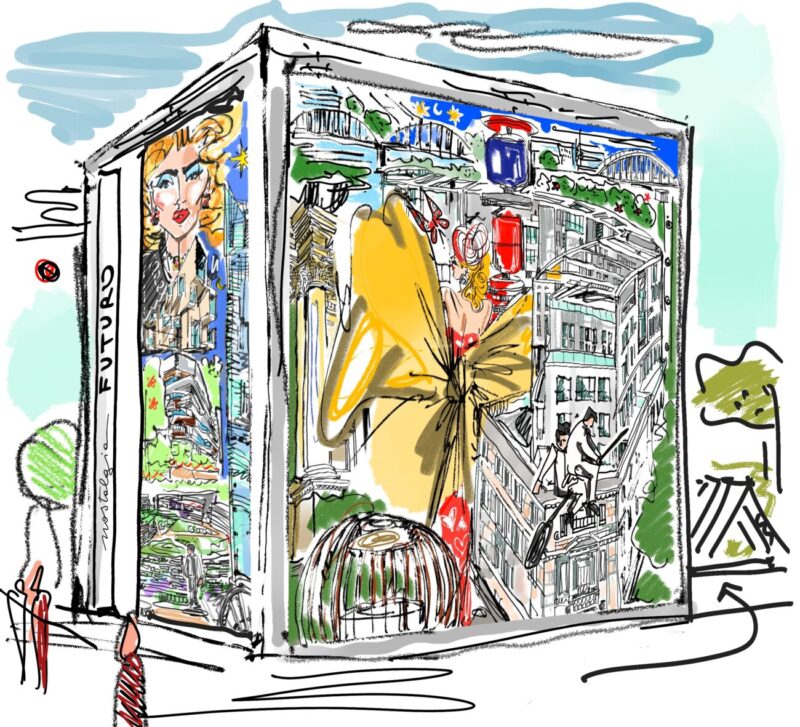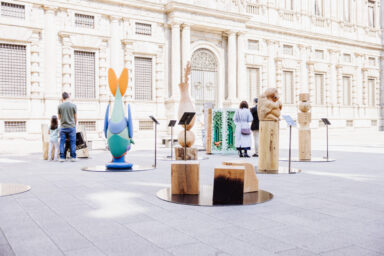Exploring a Milan that never was but could have been. A narrative flow comes to life amidst illustrated installations and designer furnishings in an immersive, olfactory, and auditory journey. The project is euphoria. The Miracle of Ascari and Remigio: Nostalgia Futuro
Words EMANUELA ZINI

Thus, Remigio Architects adorns their studio headquarters on Via Plinio and Via Righi to create a monolith made of vertical fabric panels and aluminum frames over 10 meters high, spaced rhythmically to eliminate any perforation of the entire building and define a multifaceted white canvas to magnify Jacopo Ascari’s illustrations.
An encounter of visions and cross-contaminations to experience space from the outside rather than the inside, yet with different perspectives. The fashion industry’s all-over technique is applied by Jacopo Ascari to Remigio Architects’ exhibition design field, guiding the visitor through an installation crafted with sustainable materials, a concept integral to every project of the studio. Aluminum is endlessly recyclable, while the fabric derives from recycled plastic bottles and is sublimation printed, water-based, thus avoiding solvents or chemical agents.

The exhibition continues in the inner garden of Remigio Architects’ studio, featuring five female figures drawn by the illustrator welcoming visitors inside. Elaborately detailed, these figures are laser-cut iron with hand-drawn color interventions to enhance their prominence.
Nostalgia Futuro unfolds within the studio’s interior spaces, where three furniture pieces take center stage: a seat, a bookcase, and a console. Crafted with aluminum frames reimagined in a modern, sophisticated key, Luca Remigio’s new furniture line meets the tastes of luxury Made in Italy design. These frames are complemented with high-quality materials such as iron or reclaimed solid wood, giving new life to oak planks. Collaboration with La Bottega del Falegname for the wooden structure and Rimani for the lighting that highlights the product brings these pieces to life.
Placed in separate areas, the three pieces of furniture are presented within white boxes enveloping each element to place them in their domestic environment, composing a complete living reality, made visible through Jacopo Ascari’s designs projected onto one or more backdrops, where female figures serve as a common thread with the external installations. The seat creates the living room environment with a fireplace, adorned with a painting, a mirror, and a lamp; the console is showcased in a typical home setting under a curtain-draped window; while the bookcase is surrounded by two backdrops projecting designs of paneling and an oversized lamp, creating movement in space.
Nostalgia Futuro is an experiential and multisensory journey, visually and tactually stimulating for the material aesthetic of the concept, as well as auditory. The journey is accompanied by a smart guide developed in collaboration with eArs, specializing in short audio productions for various sectors and events, and Mondadori Audiolibri.
Four audio tracks, each lasting a maximum of 1 minute and 30 seconds, composed of a brief introduction describing the installation or furniture piece, akin to a “classic” audio guide, and an evocative segment drawn directly from a Mondadori audiobook chosen to resonate with the values and concept envisioned by Remigio Architects and Jacopo Ascari. The four stops with their respective audio guides, such as the exterior facade and the three interior rooms, will host fabric totems and aluminum frames of 2 meters in height, featuring a QR code for independent audio playback via smartphone scanning. The QR code will be incorporated into a drawing by Jacopo Ascari, maintaining continuity with the installation representations.


